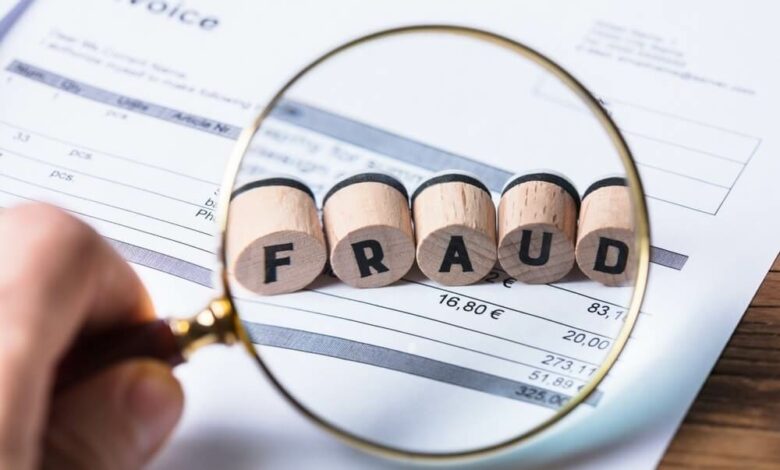Types of banking fraud in India customers should know about

Types of banking fraud in India customers should know about
Digital payment methods have gained a lot of popularity during the lockdowns brought on by COVID-19. Because they simplify financial transactions, digital payments are advantageous to consumers.
In the modern economic system, banks have a significant impact on the nation’s economic growth. Banks now engage in a variety of activities and are launching new programmes and services that open doors for financial inclusion. The banking industry is thriving, yet it is experiencing certain operational issues like scams.
However, it also gave scammers more opportunities to exploit holes and deceive clients in other ways. The Reserve Bank of India has published a pamphlet to educate banking clients about fraud involving digital payments and to outline the measures that they should take before engaging in financial transactions.
How do phishing scams operate? Fraudsters develop phishing websites that mimic real websites, including those for banks, e-commerce sites, search engines, and other services. Among other channels, scammers use SMS social media, email, and Instant Messenger to disseminate links to these websites.
Many users submit security information such as a Personal Identification Number (PIN), One-Time Password (OTP), password, and other details when they click on the link without first validating the Uniform Resource Locator (URL). These details are then gathered and used by fraudsters.
- How does vizing work?
Imposters calling or approaching customers over the phone or through social media may be posing as bankers, company executives, insurance agents, government officials, or other figures. To gain trust, imposters reveal a few consumer details, such as the customer’s name or birthdate.
Customers may be coerced or tricked by imposters into divulging private information, including passwords, one-time passwords (OTPs), PINs, and card verification values (CVVs), by invoking a sense of urgency or an emergency, such as the need to stop an unauthorized transaction, the need to make a payment to avoid a fine, or an alluring offer of reward.discount, among other things. After that, these credentials are used to swindle customers.
- Scams via online marketplaces
On online marketplaces, scammers adopt the personas of buyers and indicate a desire to buy the seller’s goods (s). To win people’s trust, several con artists impersonate defense personnel stationed in distant locations.
They use the “request money” option in the Unified Payments Interface (UPI) app in place of paying the vendor and demand that they confirm the request by entering the UPI PIN. Every time the seller enters the PIN, money is transferred to the fraudster’s account.
- Frauds involving unreliable or unconfirmed mobile apps
The RBI claims that scammers spread specific software URLs via SMS, email, social media, instant messenger, etc. that are disguised to resemble legitimate app stores’ already-existing apps. The customer is tricked by fraudsters into clicking on these links, which causes the customer’s mobile device, laptop, desktop, etc. to download unknown or unverified apps.
When the malicious app is downloaded, the scammer has full control over the customer’s device. These include messages or OTPs received before or after installing such apps, as well as private information saved on the device.
- ATM card skimming.
Criminals who steal information from customers’ cards place skimming devices in ATMs. The RBI stated in a press statement that “Fraudsters may even install a dummy keypad or a small, well-hidden pinhole camera to collect ATM PIN.”
Occasionally, when a consumer enters their PIN into a machine ATM, scammers posing as nearby customers can access the PIN. Following that, a duplicate card is made using this information, and funds are removed from the customer’s account.
- Frauds using screen sharing apps or remote access
Customers are advised by RBI to follow the method after being tricked into downloading a screen-sharing app. With the help of such an app, fraudsters can monitor or take control of a customer’s smartphone or laptop and access their financial information.
Utilizing the customer’s Internet banking or payment apps, fraudsters can conduct unauthorized fund transfers or make payments.
- SIM swap, or SIM cloning
According to RBI, fraudsters may obtain a duplicate Subscriber Identity Module (SIM) card (including an electronic SIM) for the registered mobile number connected to the customer’s bank account by gaining access to the customer’s Subscriber Identity Module (SIM) card in situations like SIM swap or SIM cloning.
Fraudsters carry out unauthorized transactions using the OTP they obtain on such a duplicate SIM. Fraudsters typically obtain the customer’s personal information by impersonating a phone or mobile network employee and asking for it to provide free SIM card upgrades from 3G to 4G or to provide additional perks on the SIM card.
- Frauds through search engine results that compromise credentials
Search engines are used by customers to locate the phone numbers of their banks, insurance providers, Aadhaar update centers, and other organizations. Scammers frequently alter these contact information listings on search engines so that they look like they belong to the appropriate company.
Customers can end up calling the fraudulent numbers that are presented as bank or company contact information on search engines since they are unknown or unverified. When clients call these phone lines, the fraudsters want their credit card information to verify their identity. Customers divulge their security information thinking the scammer is an actual RE representative, making them vulnerable to scams.
- Fraud via QR code scan
According to RBI, fraudsters frequently call customers using a variety of ruses and persuade them to scan Quick Response (QR) codes using the apps on their phones. Customers may inadvertently authorize fraudsters to take money from their accounts by scanning such QR codes.
- Fake accounts on social media.
Because so many individuals use social media and frequently update their information, it is simple for scammers to obtain this information to defraud users. The RBI brochure states that “fraudsters construct bogus profiles utilizing information about users of social media sites like Facebook, Instagram, Twitter, etc.”
Then, fraudsters contact the users’ friends and ask them for money for emergency medical expenses, payments, etc. Using false information, fraudsters can also approach users and slowly win their trust. When users divulge personal or private information, fraudsters utilize that knowledge to extort money from consumers through blackmail.
edited and proofread by nikita sharma




